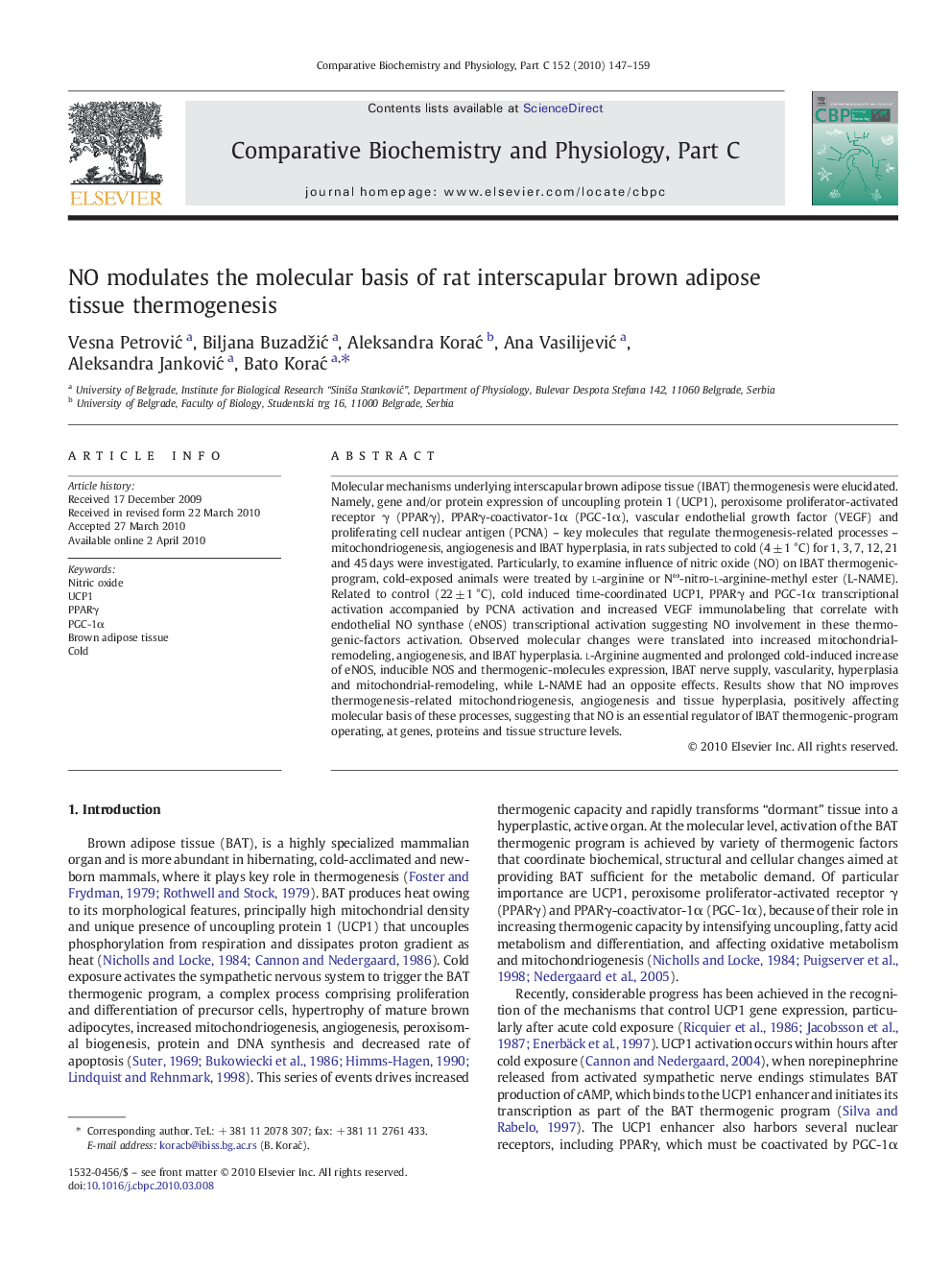| Article ID | Journal | Published Year | Pages | File Type |
|---|---|---|---|---|
| 1978077 | Comparative Biochemistry and Physiology Part C: Toxicology & Pharmacology | 2010 | 13 Pages |
Abstract
Molecular mechanisms underlying interscapular brown adipose tissue (IBAT) thermogenesis were elucidated. Namely, gene and/or protein expression of uncoupling protein 1 (UCP1), peroxisome proliferator-activated receptor γ (PPARγ), PPARγ-coactivator-1α (PGC-1α), vascular endothelial growth factor (VEGF) and proliferating cell nuclear antigen (PCNA) - key molecules that regulate thermogenesis-related processes - mitochondriogenesis, angiogenesis and IBAT hyperplasia, in rats subjected to cold (4 ± 1 °C) for 1, 3, 7, 12, 21 and 45 days were investigated. Particularly, to examine influence of nitric oxide (NO) on IBAT thermogenic-program, cold-exposed animals were treated by l-arginine or NÏ-nitro-l-arginine-methyl ester (L-NAME). Related to control (22 ± 1 °C), cold induced time-coordinated UCP1, PPARγ and PGC-1α transcriptional activation accompanied by PCNA activation and increased VEGF immunolabeling that correlate with endothelial NO synthase (eNOS) transcriptional activation suggesting NO involvement in these thermogenic-factors activation. Observed molecular changes were translated into increased mitochondrial-remodeling, angiogenesis, and IBAT hyperplasia. l-Arginine augmented and prolonged cold-induced increase of eNOS, inducible NOS and thermogenic-molecules expression, IBAT nerve supply, vascularity, hyperplasia and mitochondrial-remodeling, while L-NAME had an opposite effects. Results show that NO improves thermogenesis-related mitochondriogenesis, angiogenesis and tissue hyperplasia, positively affecting molecular basis of these processes, suggesting that NO is an essential regulator of IBAT thermogenic-program operating, at genes, proteins and tissue structure levels.
Related Topics
Life Sciences
Biochemistry, Genetics and Molecular Biology
Biochemistry
Authors
Vesna PetroviÄ, Biljana BuzadžiÄ, Aleksandra KoraÄ, Ana VasilijeviÄ, Aleksandra JankoviÄ, Bato KoraÄ,
